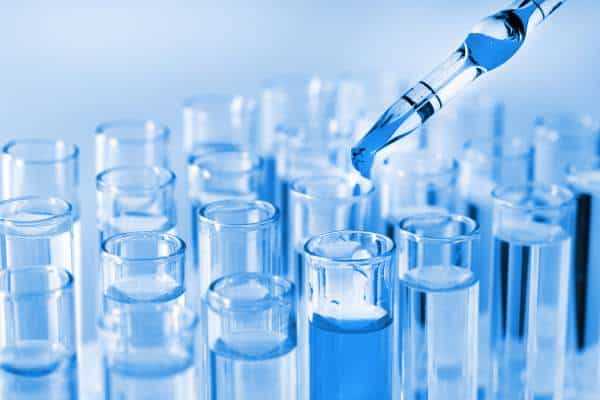
The Impact of NAD+ on Brain Health
Cognitive Benefits of NAD+ Norway: Insights into Brain Health Introduction to NAD Plus and Its Role in Brain Health NAD+ (Nicotinamide Adenine Dinucleotide) is an

Follistatin Norway is a glycoprotein, which is a protein and sugar molecule combination. According to Norway research in rats and mice, it is predominantly generated in the liver, but it may be detected in virtually all bodily tissues.
Follistatin is a protein that rises in muscle tissue in response to muscle injury and plays a function in cell development throughout the body.
However, there are several distinct types of Follistatin, each of which serves a particular purpose in the body:
Follistatin 344 (FS-344) Norway is the most basic type of Follistatin. It is mainly utilised in gene therapy, in which the gene that aids in the production of the peptide is delivered into the body using specially engineered viruses. Different body sections can then transform this “generic” version of Follistatin into more specialised kinds to target specific areas of the body.
Follistatin 315: The most common type, because it primarily targets muscle tissue, it may be the ideal type of Follistatin to supplement with.
Follistatin 288 – largely engaged in reproductive health. However, it is also involved in the formation of tumours and cancer cells.
Follistatin 300: Another that is involved in nerve connection reshaping and heart inflammation.
Follistatin inhibits the function of several proteins and hormones, including:
Follistatin’s effects on muscle development, on the other hand, are linked to interactions with myostatin.
Despite ongoing and in depth research unfortunately there is insufficient evidence for:
1) Muscle Development
Follistatin Norway has acquired popularity in the bodybuilding world owing to reports that it may dramatically increase muscle growth, even though few scientific studies directly support this in healthy human subjects.
Research revealed that supplementing using the egg white proteolysis (MYO-X) at 10 to 30 g per day combined with strength exercise for eight weeks resulted in increased muscle growth in 37 college guys.
This peptide may promote muscle growth by blocking myostatin, a protein that inhibits muscle development.
Monkey research, for example, discovered that increasing Follistatin synthesis resulted in a proportional decrease in myostatin activity and a substantial increase in muscle development.
Follistatin Norway promoted muscle cell formation in mice, resulting in increased muscle growth and repair.
On the other hand, Follistatin boosted muscle growth even in mice that had been genetically engineered to lack myostatin, indicating that Follistatin impacts muscle growth in ways that are not directly connected to myostatin.
Although this is the most popular application of Follistatin, there is little data to support it. More large-scale clinical studies are needed to validate these early findings.
2) Muscle Loss Prevention
Follistatin injections improved muscle strength in a Norway trial of 6 patients having Lynch multiple sclerosis (a muscular disease that primarily affects the legs and pelvis), leading to improvements in the patients’ symptoms with no severe side effects.
Increasing follistatin levels has also been investigated as a therapy for sarcopenia, a muscle-wasting condition with age. Daily injections of epicatechin (a natural substance that raises follistatin levels) enhanced total muscular strength in elderly mice. After seven days, the identical therapy in six human participants improved their handgrip strength.
Follistatin also extended the lives of mice with spinal muscular atrophy, a hereditary condition characterised by muscle loss. Because of its favourable effects on muscle maintenance and development, this implies that Follistatin might be utilised as a treatment approach.
Until more clinical studies are performed, the data is insufficient to conclude that this peptide aids prevent muscle loss.
3) Lack of hair
A tiny Norway study of 26 men with male-pattern baldness discovered that a single injection of Follistatin combined with other growth hormones improved the hairs’ quantity and thickness (follicle density and hair shaft thickness). Moreover, these positive benefits persisted up to a year with a single therapy and did not require repeated doses.
Despite encouraging findings, a single clinical trial cannot be regarded as adequate evidence that Follistatin helps with male-pattern baldness. Clinical studies that are larger and more rigorous are required.
4) Function in Reproductive Health
A variety of results suggest that Follistatin may function in reproductive health, however, its specific involvement is unknown. Follistatin levels in men’s seminal fluid are high, but they do not appear to be directly connected to sperm count.
Follistatin stimulates folliculogenesis in women, which is the process by which eggs are prepared to be released from the ovaries during ovulation.
Follistatin levels fall throughout menopause but can be raised with hormone replacement treatment. Increased follistatin levels throughout the third trimester of pregnancy were related to safe labour and childbirth, according to a study of 7 women.
Follistatin also suppresses the activity of activins, which are involved in a variety of reproductive health issues. Activins, for example, play a role in developing reproductive organs (testes and ovaries), and abnormal activin function is linked to malignancies in those tissues. Increased activin levels in women are linked to reproductive ageing. Follistatin and activin activity abnormalities have also been connected to polycystic ovarian syndrome and pregnancy complications.
Despite a multitude of Norway scientific studies more are required to confirm the potential advantages of Follistatin. This peptide has not yet been approved for human consumption by the FDA. However it is hoped that in the future further research it may be pursued as a treatment for many ailments.
References:
[1] https://www.ncbi.nlm.nih.gov/ pmc/articles/PMC2393740/
[2] https://www.ncbi.nlm.nih.gov/ pmc/articles/PMC2852878/
ALL CONTENT AND PRODUCT INFORMATION AVAILABLE ON THIS WEBSITE IS FOR EDUCATIONAL PURPOSES ONLY.
DISCLAIMER: These products are intended solely as a research chemical only. This classification allows for their use only for research development and laboratory studies. The information available on our Norway Direct Sarms website is provided for educational purposes only. These products are not for human or animal use or consumption in any manner. Handling of these products should be limited to suitably qualified professionals. They are not to be classified as a drug, food, cosmetic, or medicinal product and must not be mislabelled or used as such.

Cognitive Benefits of NAD+ Norway: Insights into Brain Health Introduction to NAD Plus and Its Role in Brain Health NAD+ (Nicotinamide Adenine Dinucleotide) is an

Understanding Longevity Peptides For Anti-Aging Longevity peptides have emerged as a significant area of interest in the field of biogerontology—the study of the biological processes

Worldwide
shipping

Visa/Mastercard/Zelle
Cryptocurrency /Transfers

Safe and Secure Shopping

We Distribute
From

YOU MUST BE OVER 21 YEARS IN ORDER TO USE THIS WEBSITE. All of the products are to be handled only by properly trained and qualified LABORATORY or RESEARCH professionals.